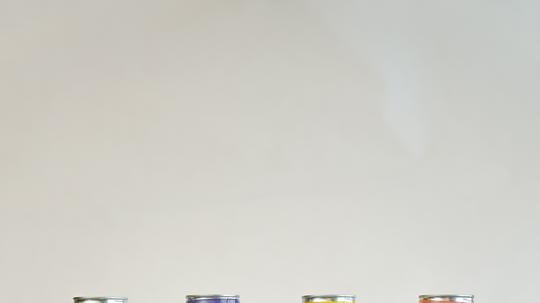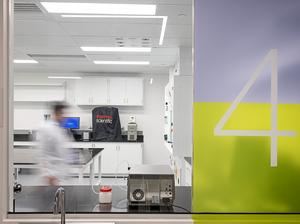
For Jameson Visconte, the bar manager at Coppersmith Boston, Archer Roose wine hit the perfect trifecta of value, taste and design.
The price is good, said Visconte, and so is the taste, and the container – a can – is convenient. The drink can be served without worrying about shattered glass or dumping a bottle with leftover wine.
“It’s easier to just hand them a can,” he said. “We’re not throwing bottles a way, so we don’t have the waste.” And compliments on the rosé didn't hurt.
Archer Roose, a wine-brand start-up headquartered in Boston, is counting on restaurants like Coppersmith and other customers – especially millennials – to fuel its rapidly expanding operation.
Founded in 2014 by Marian Leitner-Waldman and her husband David Waldman, Archer Roose has gone from selling only in New York only to nine states. By this summer that count will end at 13 including New Hampshire, Maine, Massachusetts, Rhode Island, Connecticut, New York, New Jersey, Tennessee, North Carolina, Texas, Maryland and Virginia as well as Washington.
The company was also a MassChallenge finalist two years ago and is closing its “seed” round of funding to expand and boost its sales team, said Leitner-Waldman, declining to disclose the amount.
With its alternative business model, Archer Roose literally skips the bottle for its drinks, which include sauvignon blanc, chardonnay and rosé. The company sources its wines from Provence, France; Veneto, Italy, Casablanca, and Chile and gets it shipped to the U.S. in 24,000-liter tanks which is then packaged in cans, kegs and boxes.
Archer Roose rents the winery to make wine allowing for better quality control. The company uses grapes that are not exposed to herbicides or pesticides to lower costs and ensure consistency.
Traditional wine-branding is limited by location, according to Leitner-Waldman. For example cabernet sauvignon is strongly associated with Napa Valley and rosé to France. What this means is that wineries in particular places often find only a few types – such as rosé or cabernet sauvignon – profitable simply because of where they are. The other traditional branding model, she said, is buying bulk wine.
“That is wine that’s left over from existing wineries. The issue with that is you can’t control the quality and consistency year over year,” she noted.
Instead, Archer Roose is able to go to the best regions for that variety. The best example is, every country in the world makes rosé, but French rosé, particularly Provence rosé, is the most popular. So, the company will go to Provence to make rosé and Italy to make prosecco.
Sipping vino from a can or pouring it from a keg or box might sound like a sin for wine traditionalists, but Leitner-Waldman seeks to shatter the idea that the juice only goes in glass. Bottles, she contends, are necessary for aging wines, but not for drinking young grapes. Also, she said, wine stays fresh for up to six weeks in a box or keg, and a can is one serving. Bottles must be used up quickly or they go bad.
This model also has advantages for restaurants like Coppersmith because there’s no worry about selling wine by the glass and failing to use up the bottle before it goes bad. And, each can is able to be scanned and tracked.
“We like to think that what we’ve done is created a low-tech solution to wine-by-the-glass programs,” said Leitner-Waldman.
But in any new alcoholic drink venture, the glass is never completely full, especially when regulations and logistics complications come by the barrel. Selling in more states means navigating each one's booze rules and finding a distributor. And the chemistry of wine also means careful canning, to avoid a bad mix.
"We're still understanding the science of what happens to the wine when it's in a can. We can every six to eight weeks ... to constantly test the wine and make sure it's holding up."
If all this sounds a lot like beer, there’s a reason for that.
“What we’ve done, is we’ve borrowed from craft beer," said Leitner-Waldman. "We like to say we’re a craft wine company.”








